Last week we took another look at a historic masonry building with brick spalling. Spalling bricks are a result of one or more of several different types of potential deterioration and are a type of damage characteristic of the face of the brick cleaving, breaking or falling off of a wall.
Last week we talked about the indicative type of signs that are apparent when spalling is happening or in the process or about to happen. Masonry deterioration, unlike deterioration of other materials like wood or roofing, happens over long periods of time and in some cases can be very slow, over many years or even decades. We say that this is slow because in comparison to organic building materials like wood or forest products, bricks can take decades to deteriorate. Once exposed to significant amounts of moisture, wood can begin to warp, twist, and even rot, almost right away. In some cases within just one season, signs of rot will occur and insects will even start eating wood materials when significantly hydrated. By comparison, masonry deterioration can be much slower, yet equally destructive.
Today we’re referring back to the four of the main causes of brick spalling, the effects and risks of spalling, and related issues of water infiltration. There might be other types of things that can cause brick spalling, other causal factors, but these four are so common in DC that we see the result of these causal factors again and again:
- Overhydration
- Low-temperature firing
- Freeze-thaw conditions
- Hard mortars
We’re going to talk about each of these individual factors in a future blog, designated to each item, but today we’re also going to talk about the long-term damage from unmitigated bricks spalling, beyond the surface, and the effects of brick spalling.
At the wall in the picture below, you can see a series of catty corner bricks with severe spalling.
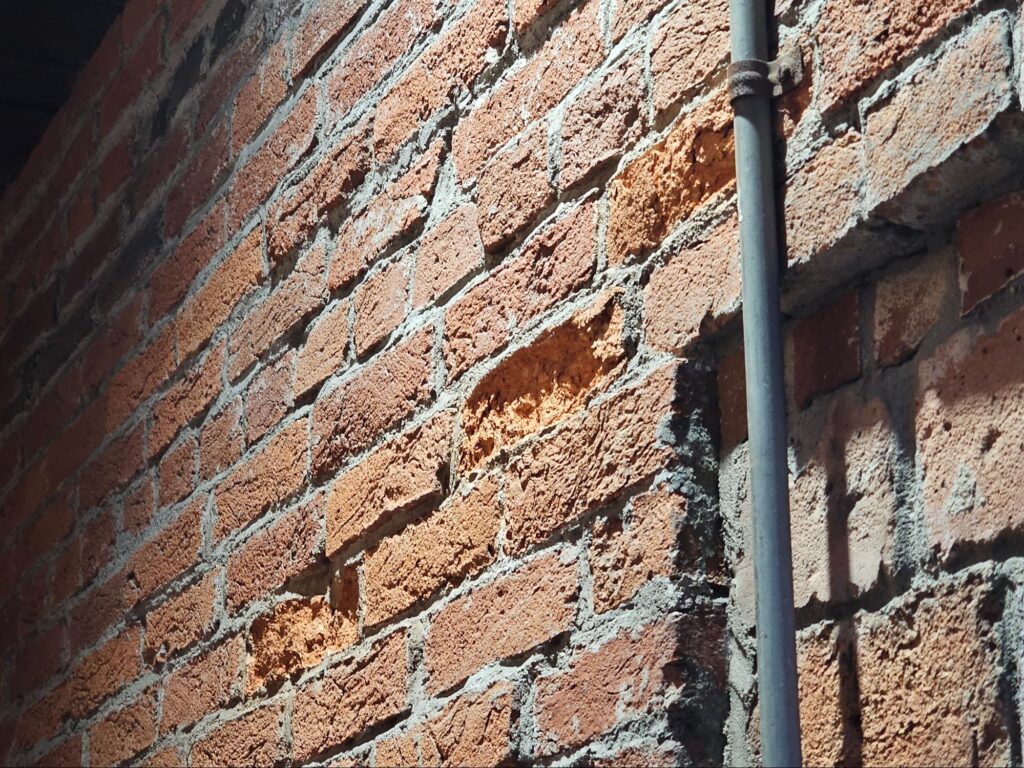
Unmitigated brick spalling and water entry related to spalling can have severe long-term effects that extend beyond the surface of the brick facade. Here are some of the potential long-term impacts:
- Structural Deterioration: When spalling occurs, it exposes the inner cores or internal materials of the bricks and wall system to moisture penetration. Over time, this moisture can cause corrosion of any embedded steel reinforcement, anchors, or ties within the wall assembly (not commonly found in historic brick though). As the metal components corrode and expand, they can exert internal pressure, leading to further cracking, displacement, and potential structural instability. Several different types of steel reinforcement and steel connectors are used in more modern types of brick construction and / or historic industrial types of brick masonry. However, in the typical Washington DC historic brick buildings, especially in residential row homes, steel reinforcement of bricks is relatively uncommon. In fact, anchor ties, tie-backs, and earthquake washers are often seen on the sides of these historic buildings but were less common at the time of original construction. Earthquake washers are often added as a form of remediation of lateral deflection.
- Freeze-Thaw Damage: Water that seeps into the interior of the brick wall can become trapped within the porous materials. During freezing temperatures, this trapped moisture can expand as it turns to ice, causing internal stresses and exacerbating the spalling process. This cycle of freezing and thawing can lead to progressive deterioration of the brick, mortar, and backup wall components. When the face of a brick has spalled, the most vitreous portion of the brick, the outer face, has been removed and with that face gone, the intrinsic shield to deter water entry is also then missing.
- Efflorescence and Salt Crystallization: Moisture penetration can dissolve and transport soluble salts from within the brick and mortar. As the water evaporates, these salts can recrystallize on the surface, causing unsightly efflorescence and potentially leading to further spalling and material loss. Brick walls, or brick assemblies with severe spalling allow a greater degree of water entry which then, in turn, hydrates the wall more drastically than walls or bricks which have not spalled. As that moisture seeps and enters deeper into the brick assembly, the wall becomes hydrated and efflorescence forms on the surface as the moisture slowly dries.
- Mold and Mildew Growth: The presence of moisture within the wall assembly can create an environment conducive to the growth of mold, mildew, and other biological contaminants. This can pose health risks, deteriorate organic materials, and potentially compromise the indoor air quality of the building. Unfortunately, it’s at this point, most often, that issues of brick spalling become a problem so severe and / or exacerbated that occupants of the building take note and call for help. (It’s better to address these issues ahead of time, and call a contractor like us before the problem gets this bad.)
- Insulation Degradation: If the brick wall system includes insulation materials, prolonged moisture exposure can lead to the deterioration or loss of insulation effectiveness. This can result in increased energy costs and potential condensation issues within the wall assembly. This issue is very similar to the item described above of mold and deterioration related to excessive hydration. The insulation though can become a point of further exacerbation because as water builds up, it can be hidden by the insulation causing further deterioration and festering before it becomes noticed or observed on the finished surface of the interior wall.
- Corrosion of Embedded Components: Apart from reinforcing steel, moisture can also corrode any embedded metal components within the wall, such as anchors, ties, or flashing materials. This corrosion can weaken the integrity of the wall system and potentially lead to further water infiltration.
A close-up view of one of the bricks in the picture above shows the extent of the damage. The remaining exposed portion of the surface of the brick, below the position of the face of the brick, is so soft that it crumbles when you touch it. We’ll also take a look, in next week’s blog article, at another brick wall with severe damage, just like this but in that case when you touch the bricks they just crumble.
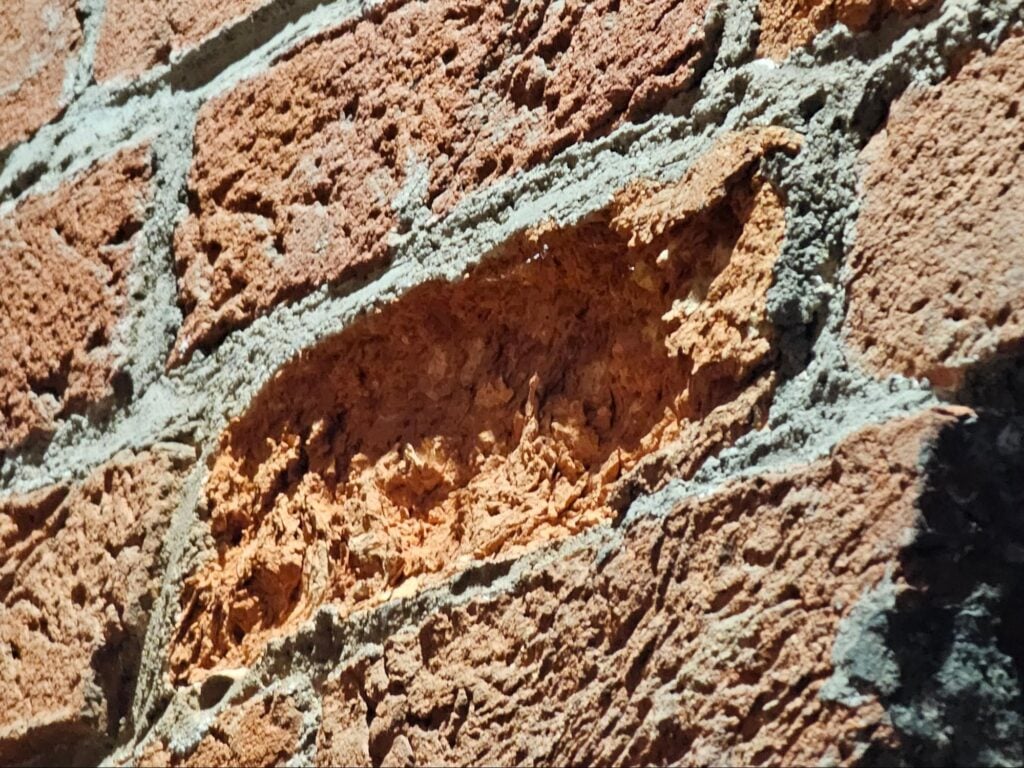
Another picture of one of the adjacent bricks follows below. In this case, a contractor in the past had used the improper hard mortar and it has damaged several of the bricks in the wall.
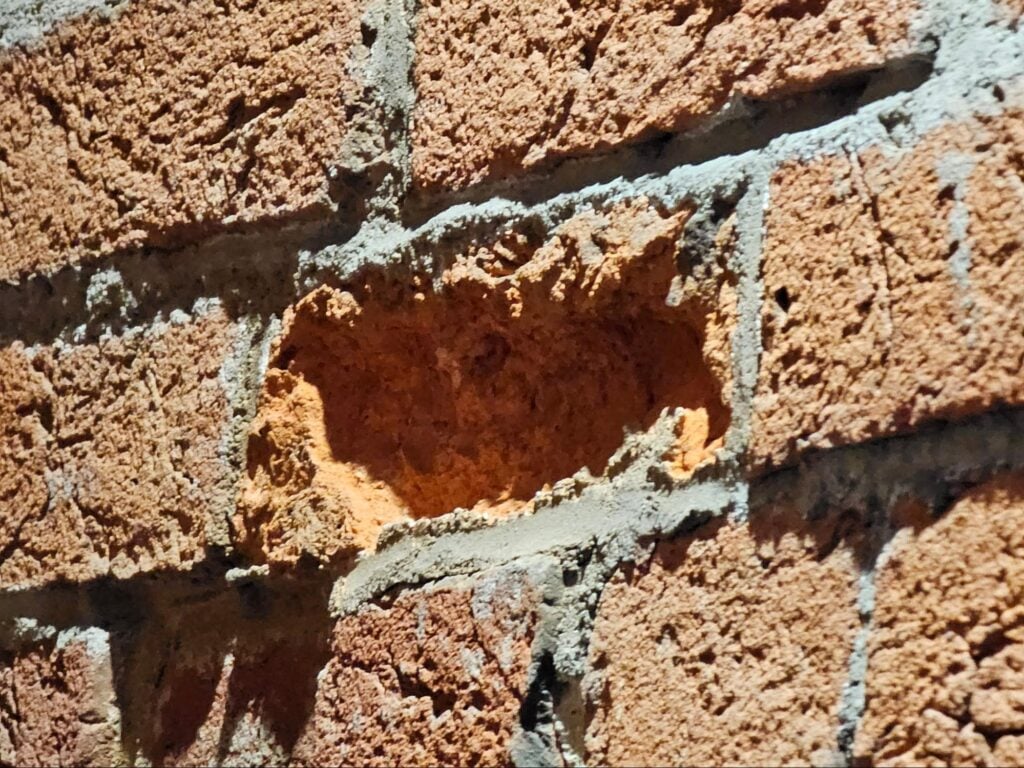
Above, we mentioned that there are certain cases where steel is embedded or set in historic masonry walls. The picture below shows a particular example of an industrial strength historic brick wall, built many decades ago. We will look more closely at this wall as well in an upcoming blog.
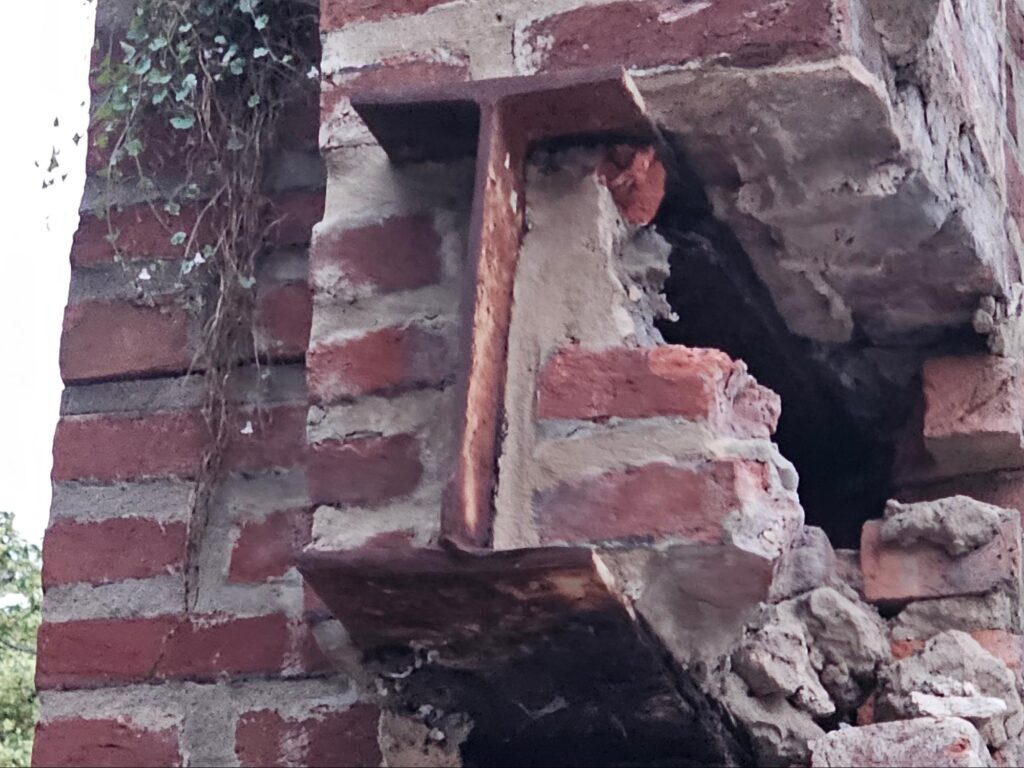
7. Aesthetic Degradation: Over time, unmitigated spalling and moisture penetration can significantly impact the aesthetic appearance of the brick facade. Discoloration, staining, and material loss can diminish the building’s visual appeal and potentially affect its value.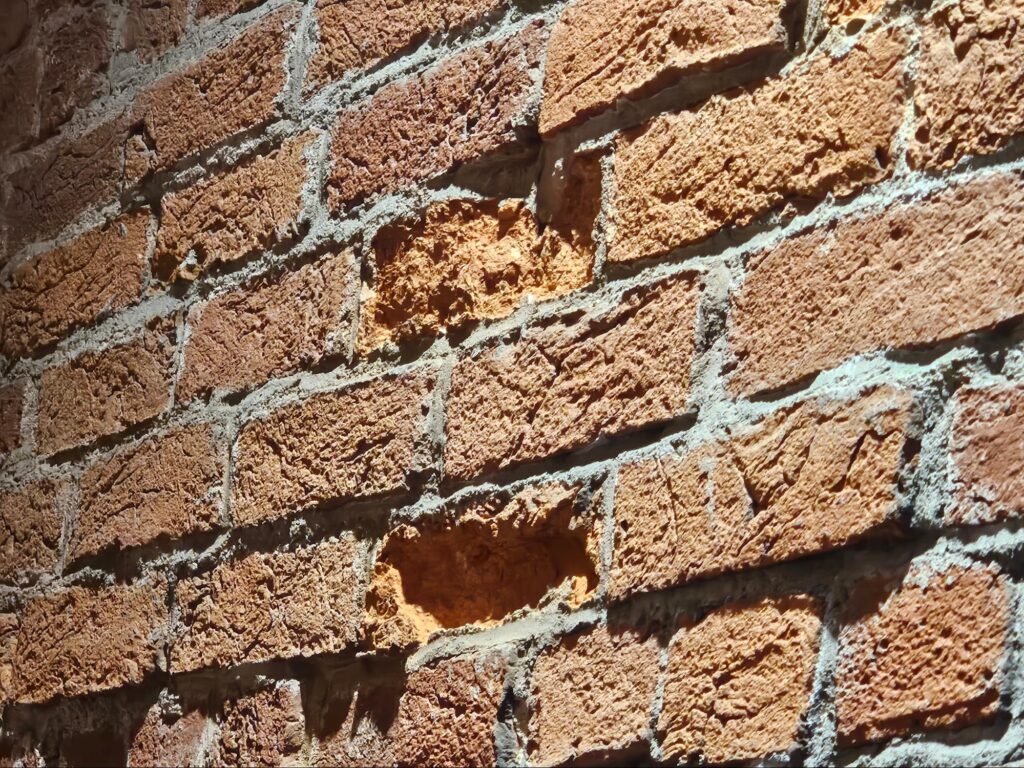
You can reach us by telephone at (202) 796-7644 and you can reach us by email from the contact form on our website at https://duponttuckpointingmasonrydc.com/contact-us/.




